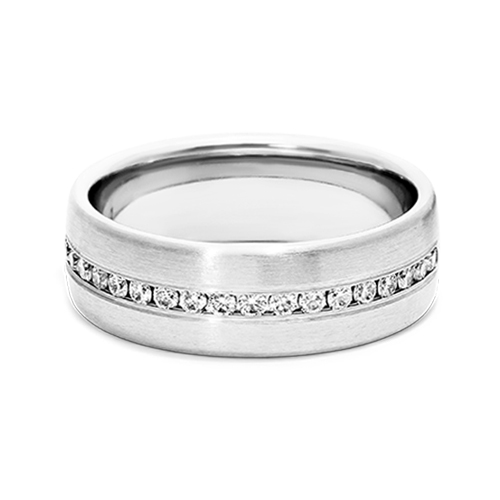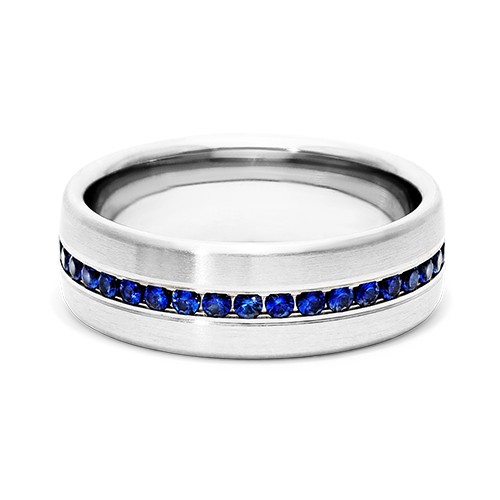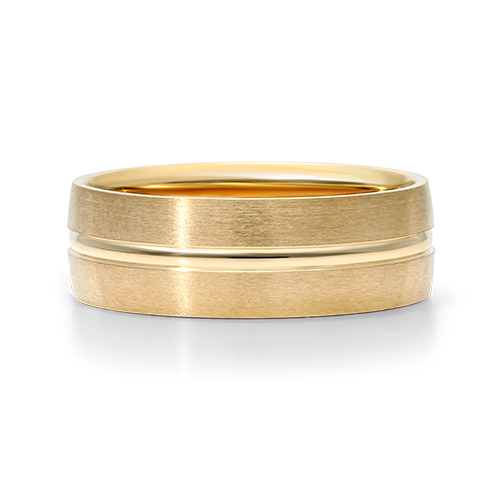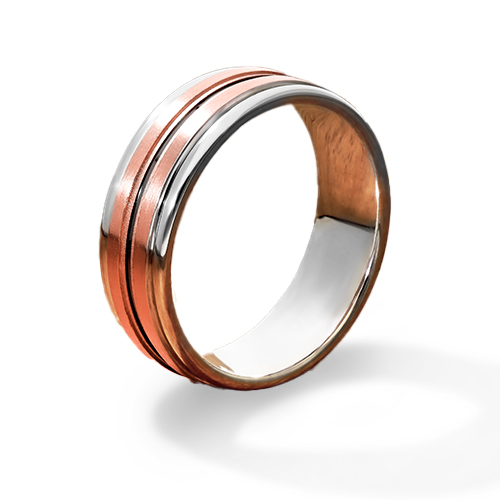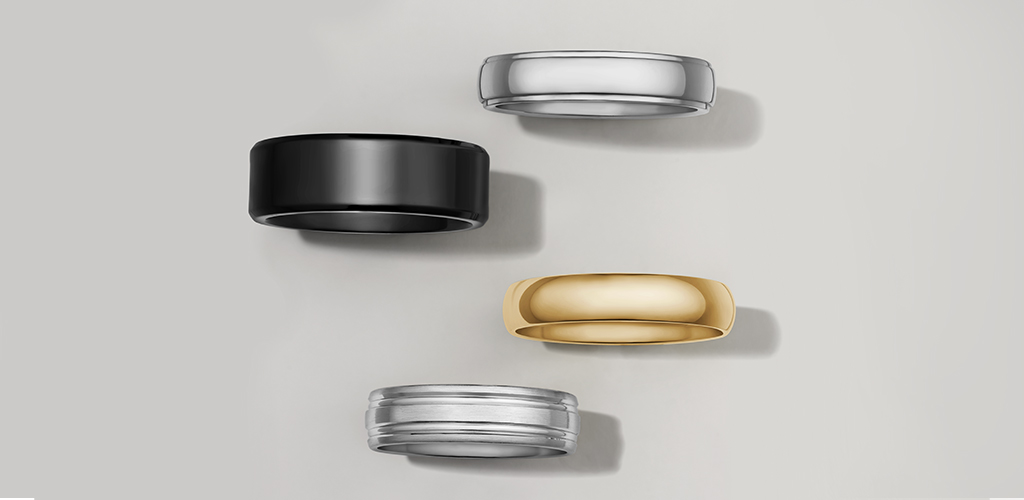
Choosing the perfect men’s wedding ring is a significant decision that combines personal taste with practical considerations. This guide explores a wide range of options, including materials, styles, and pricing, to help you find a ring that not only symbolizes your commitment but also suits your daily life.
Your wedding rings are going to be the most important pieces of jewelry you and your partner own: you’ll likely wear them every single day! The two rings will be presented at the wedding ceremony to symbolize the lifelong union between you and your partner.
Whether you opt for matching wedding bands, alternative metals, or carved patterns, make sure they mean something special to both of you! Whenever you look down at that special ring, you’ll be reminded of your loved one and the bond you share!
Traditional and Alternative Metals: Selecting the right material is crucial as it affects the ring’s look, feel, and durability. Here are some popular options available on James Allen:
Gold: A classic choice, available in yellow, white, and rose hues, varying in karat (14k, 18k).
Platinum: Highly durable and pure, making it hypoallergenic and ideal for sensitive skin.
Tungsten: Extremely hard and scratch-resistant, perfect for those with active lifestyles.
Titanium: Lightweight and strong, resistant to corrosion.
Cobalt: Scratch-resistant and harder than titanium, with a naturally white appearance similar to platinum.
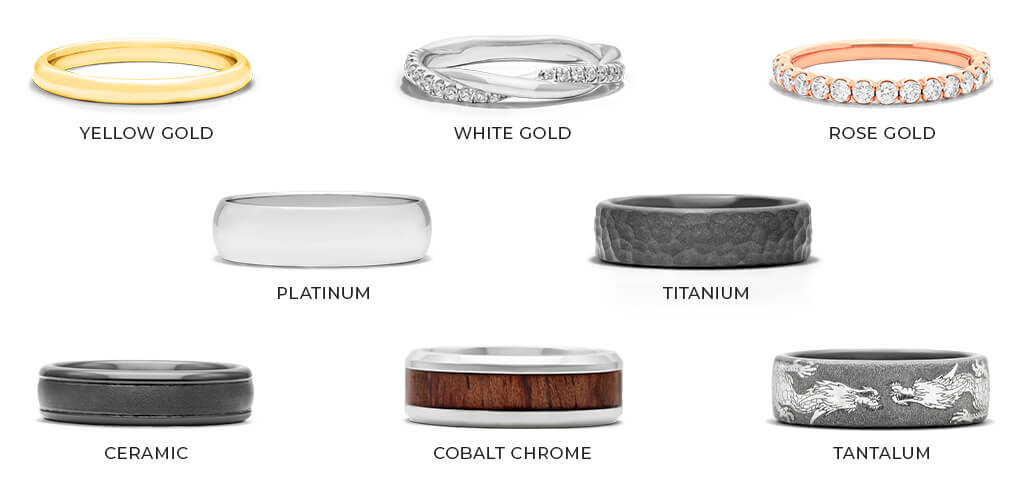
Typically ranging from 4mm to 8mm. The choice depends on hand size and personal comfort.
A narrower band is generally more proportional and comfortable for men with smaller hands or shorter fingers. A width of 4mm to 6mm can be ideal as it ensures that the ring enhances the finger without overwhelming it. Rings that are too wide can make small hands look even smaller and may also restrict finger movement.
Men with medium-sized hands are fortunate in that they can comfortably carry off a wide range of widths. A bandwidth of 5mm to 7mm is often perfect, as it provides a noticeable presence on the hand without appearing too bulky or too slender. This range offers a balanced look that complements the hand size.
Those with larger hands or longer fingers can wear wider bands that make a stronger statement. A width of 6mm to 8mm, or even wider, can look more proportional and aesthetically pleasing. Wider bands on larger hands help to fill space elegantly, ensuring the ring looks appropriately scaled.
For men with thinner fingers, it’s important to choose a ring that doesn’t overpower the hand but still feels substantial. A narrower band, typically between 4mm and 5mm, tends to be more proportional and aesthetically pleasing. These widths help maintain a delicate balance by providing a noticeable ring presence without making the finger appear even slimmer.
Men with thicker fingers have more leeway to go with wider bands, which look more proportionate and can be more comfortable. A width of 6mm to 8mm or more can be ideal. Thicker bands fill more of the finger space, which can visually balance the hand and ensure the ring is noticeable and aesthetically pleasing.
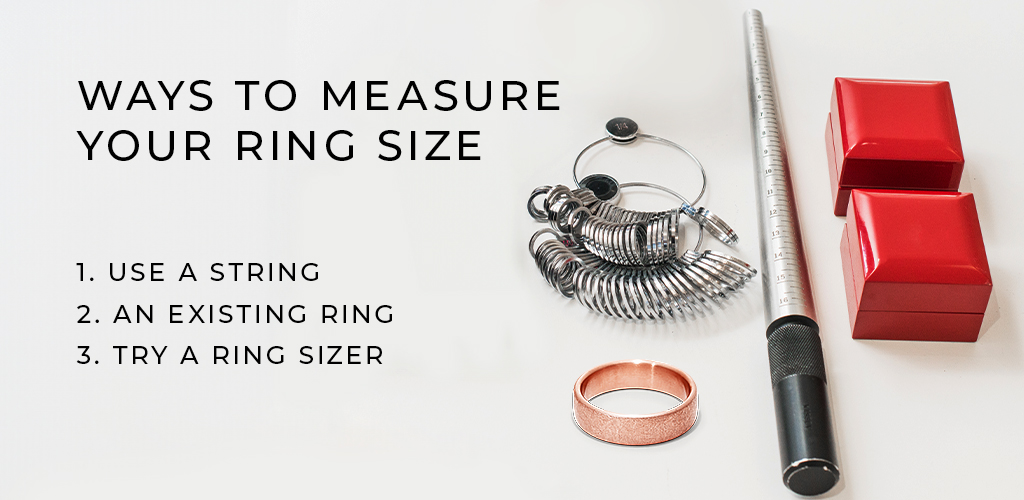
Classic bands are usually plain with a uniform width, while contemporary styles might incorporate unique textures, colors, and detailing like beveled edges or inlays.
Engravings can personalize your ring with dates, names, or special messages. Some rings also offer the option for inset stones or custom finishes.
Polished: A high gloss that enhances the ring’s color and brightness.
Matte: A less reflective finish that offers a modern look.
Hammered: Textured surface that hides scratches and dents we
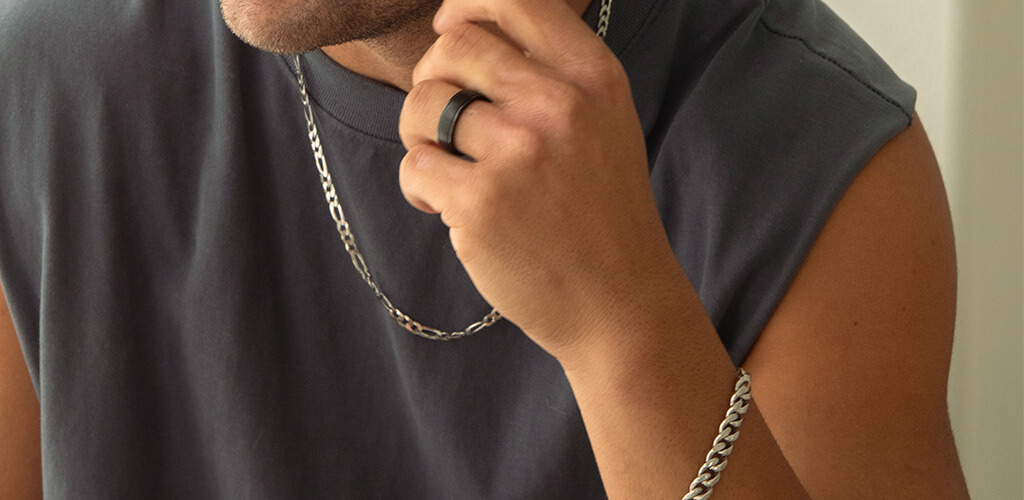
Features rounded edges inside the ring to minimize contact with the skin, ideal for those unaccustomed to daily ring-wearing.
Flat on the inside, which can be less comfortable but may feel more secure for some.
Sizing Tips: Visit a jeweler to have your ring size measured accurately. For online sizing, tools like printable size guides or string/paper methods can help, but professional sizing is recommended for best results.
Choosing for Lifestyle: Consider how your daily activities might affect your ring. Metals like tungsten or titanium offer high durability against physical work or frequent exposure to elements.
Care Instructions: Different metals require different care:
Price Range: Men’s wedding rings can vary significantly in price. A simple silver band might start as low as $100, while high-end platinum bands can exceed $2,000. The average price for a quality gold or alternative metal ring typically ranges from $500 to $1,500.
Budgeting Tips: Determine your budget early in the shopping process and explore various metal options to find a ring that fits both your style and financial parameters.
Selecting the right men’s wedding ring involves balancing style, material, functionality, and budget. Whether you prefer a timeless gold band or a durable tungsten ring, ensure it reflects your personality and fits comfortably on your finger. Remember, this ring symbolizes your love and commitment, so choose one that you’ll be proud to wear for a lifetime.
Gold remains the most popular metal for men’s wedding rings due to its timeless appeal and versatility in style and color variations (yellow, white, and rose gold). Platinum is also highly favored for its durability and natural white sheen that does not tarnish over time.
In many Western cultures, the wedding ring is traditionally worn on the fourth finger of the left hand. This tradition is based on the belief that this finger has a vein that runs directly to the heart. However, some cultures wear wedding rings on the right hand, reflecting local customs and traditions.
Yes, a professional jeweler can resize most wedding rings to make sure they fit comfortably.
You are in complete control of the choice. While some couples choose complementary designs, others prefer matching rings.
